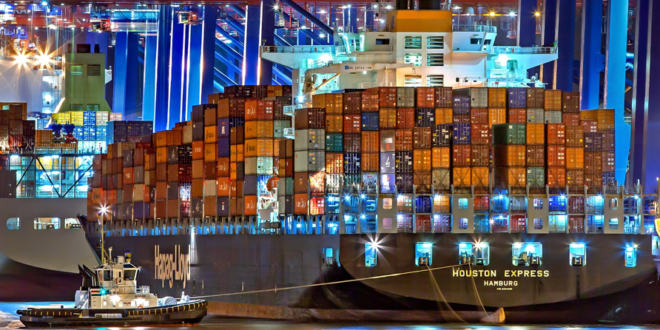How Cargo Ships Can Go Green
The shipping industry is one of the pillars of modern commerce, as it allows global markets to send goods anywhere in the world. You can have Japanese candy delivered to your door or you can send American snacks to Australia all thanks to the global shipping network. Most people don’t give the shipping industry a second thought so long as their packages arrive on time, but it is responsible for a significant amount of the world’s pollution. The shipping industry is essential and will surely last far into the future, but how it conducts business is being altered to reduce the negative environmental impacts. By incorporating new technologies and expanding existing programs, like API integration, the shipping industry can and will go green. Changes are already beginning as the International Maritime Organization (IMO) has pledged to reduce the global shipping industry’s greenhouse gases by 50% compared to 2008 emissions by 2050.
Global Sulfur in Fuel Cap
In addition to other green measures, the IMO cap on the amount of sulfur in marine ship fuel went into effect as of January 2020. The sulfur cap dictates that ship fuel can only contain 0.5% sulfur down from the previous cap of 3.5%. The IMO estimates that the sulfur cap will help prevent acid rain and avoid more than 570,000 premature deaths between 2020 and 2025 with Asia-Pacific, Africa, and Latin America seeing the largest beneficial impacts.
The new regulation has forced shipowners to find new fuel solutions, and it is commonly accepted that Liquified Natural Gas (LNG) is the best fuel alternative. LNG is nearly pure methane which can reduce emissions by almost 100% compared to fuel oil. While LNG is currently the best alternative to fuel with sulfur, the combustion of LNG produces methane slip. Methane is a greenhouse gas that is more harmful than CO2 emissions, so while LNG is better than sulfur fuel it is unlikely to be the final solution.
Drag Reduction
One of the biggest factors that determine a ship’s efficiency is drag as drag forces a ship’s engine to work harder and use more fuel. Thankfully, there are new processes that aim to reduce drag. Barnacles attach to ship’s hulls and can increase a ship’s fuel consumption by between 20 and 40 percent by increasing drag. Chemicals to repel barnacles and coatings that make it harder for the mollusks to attach are being developed. Even underwater drones are being used to scrape barnacles off of ships without putting the ship in drydock.
Ships are often painted and coated with special products to reduce drag. These coatings protect the hull from corrosion and abrasion, but antifouling coatings are specifically designed to prevent or slow marine growth on the parts of a ship’s hull that are underwater. Marine growth or marine fouling is defined as the unwanted accumulation of microorganisms, plants, or other life on a ship’s hull. Marine growth might sound inconsequential, but every piece of drag matters and can affect a ship’s efficiency.
Power of APIs
The shipping industry can build the most efficient ship and the lowest emission fuel, but data errors can send packages to the wrong location which wastes resources. Thankfully, technological advancements have created ways of reducing errors before a package leaves port and one of those ways is by using APIs. An API (application programming interface) is a program that lets one application work with a different application to bring a new service to a platform. APIs are everywhere and a shipping or address verification API can help reduce errors that lead to unnecessary waste.
An address verification API takes a customer’s shipping address and checks if the address is valid. If you have ever typed in an address and had the web page suggest the same address with different formatting, then you have interacted with an address verification API. An address verification API aims to reduce human error by validating or fixing shipping addresses to ensure packages are shipped to the correct location.
Minimal or Green Packaging
If an item is shipped, chances are it will arrive in a box, envelope, plastic bag, or some other form of packaging, but many packaging options are not sustainable or environmentally friendly. New green packaging options that use biodegradable materials and efficient production methods are becoming available on a large scale. Sugarcane by-product (bagasse), corn, and hemp are popular biodegradable materials used to create green packaging. Major businesses are transitioning to green packaging with Alibaba and L’Oreal teaming up to create a green packaging strategy for all L’Oreal products.
The shipping industry can and will go green in the coming years. Cleaner fuel and drag reduction will help make ships more environmentally friendly. APIs and green packaging will help tackle the other areas of shipping to make the entire industry more efficient and less wasteful.



